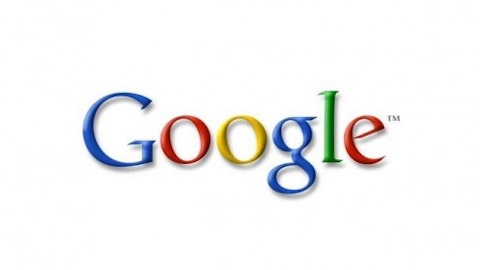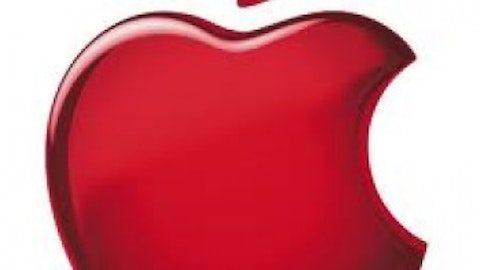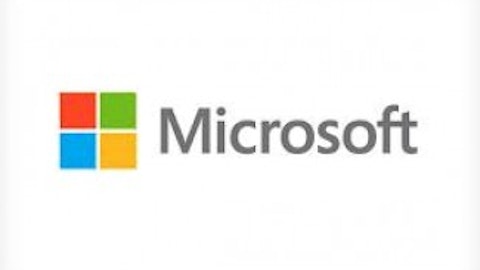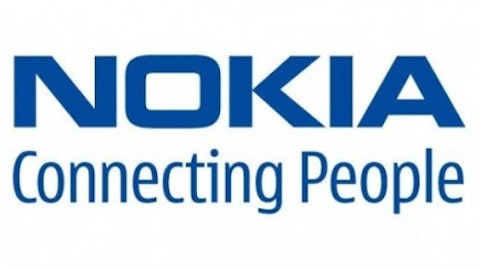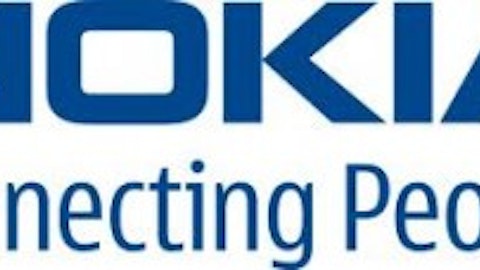Since the time covered in last week’s update, Microsoft Corporation (NASDAQ:MSFT) lost more in market value for the real-money Inflation-Protected Income Growth portfolio than any other stock in that portfolio. The key driver of that loss was the market’s disappointment with Microsoft’s purchase of Nokia Corporation (ADR) (NYSE:NOK)‘s devices and services business.
The market’s punishment of Microsoft Corporation (NASDAQ:MSFT) on the news essentially caused it to give up the gains it had made following the announcement that Steve Ballmer, longtime CEO, is retiring. Indeed, combining a weak smartphone software platform with a struggling cellular-phone titan would seem to be a last-ditch effort to save two struggling operations, and the market is not pleased.

What else is new?
While the market is clearly disappointed in Microsoft Corporation (NASDAQ:MSFT)’s acquisition, it’s more or less par for the course for Microsoft. The company’s history is littered with examples of being behind the curve and struggling against more innovative competition. One of the most famous early examples was the “Windows ’95 = Macintosh ’89” campaign that claimed that Microsoft’s flagship Windows operating system was several years behind Apple Inc. (NASDAQ:AAPL)‘s product line.
Fast-forward nearly two decades, and the story is really more of the same. In this generation, it’s Apple Inc. (NASDAQ:AAPL)’s iPhone that’s years ahead of Microsoft Corporation (NASDAQ:MSFT)’s smartphone offering, and the Nokia Corporation (ADR) (NYSE:NOK) deal is part of Microsoft’s attempt to try to start playing catch-up with its more innovative high-tech rival.
Trailing competition — particularly Apple Inc. (NASDAQ:AAPL) — is nothing new for Microsoft Corporation (NASDAQ:MSFT), and indeed, most of the time, the market expects very little in the way of innovation from Microsoft. In fact, when it was originally selected for the iPIG portfolio, Microsoft’s shares were trading where they looked reasonably priced even if the company never grew again.
In spite of the market’s disapproval of its expensive catch up attempt, Microsoft’s shares are still up more than 14% since originally being bought for the IPIG portfolio. On top of that, it has paid a decent dividend that’s well covered by the company’s operations. There’s a simple reason the portfolio succeeded in making money with Microsoft even as Microsoft stumbled. At the time it was picked for the portfolio, the market expected almost nothing from Microsoft, which was a hurdle even Microsoft could beat.
It’s the portfolio that counts
When all is said and done, what matters to an investor is the performance of his or her portfolio. Over time, that performance is driven by how well companies within that portfolio operate, especially when compared with what expectations were priced in at the time of purchase.
Over the past week, the IPIG portfolio actually gained $358.92 in value, as Microsoft was one of only two stocks losing substantial market value during that time period. The other was pipeline giant Kinder Morgan Inc (NYSE:KMI), which dropped on news that Hedgeye Risk Management was bearish on the company, calling it a “house of cards”.
While the pipeline giant does rely on debt to cover its expansion plans and is expanding so quickly that its dividend is not currently covered by its available cash, the company is hardly a house of cards. Still, the debt-fueled expansion and currently not covered dividends are risks that the company faces. While it has a good history of profitably managing its expansions while continuing to reward its shareholders, there’s no guarantee it will continue to do so.
Whether in Microsoft, Kinder Morgan Inc (NYSE:KMI), or any of the other companies in the IPIG portfolio, the risks of non-performance are very real. Only time will tell whether each of the companies in the portfolio can continue to execute in a way that keeps them worth owning. But since each company in the portfolio was picked when it looked reasonably priced with what looked like reasonable expectations, there’s a reasonable chance that the portfolio as a whole will wind up fine.
